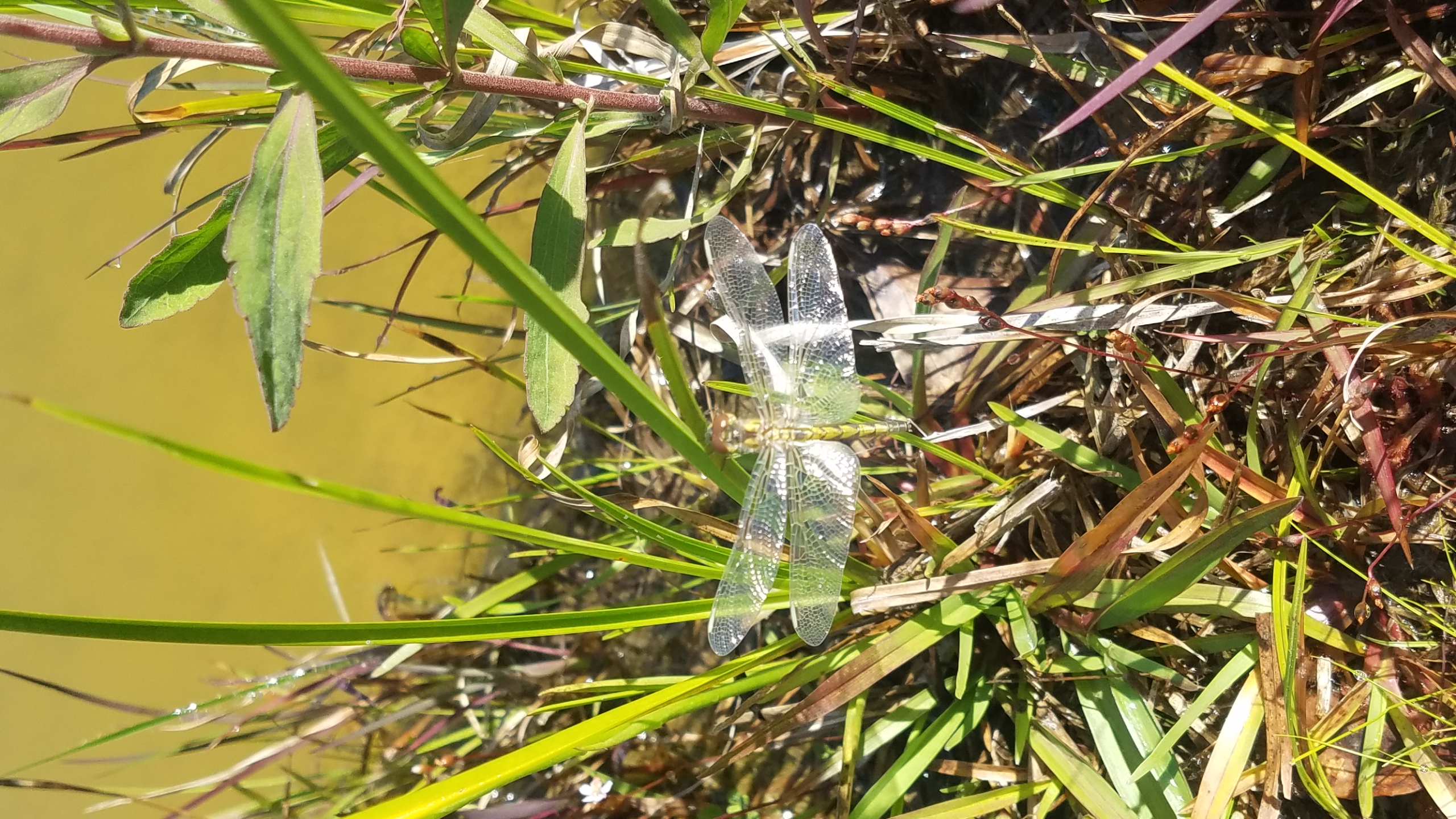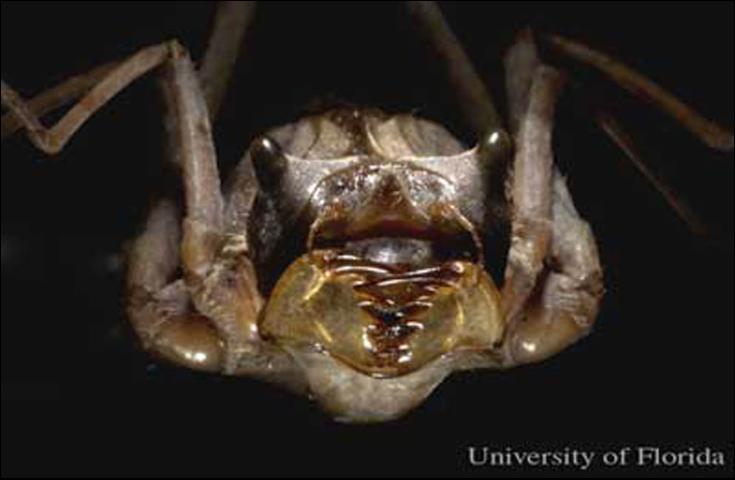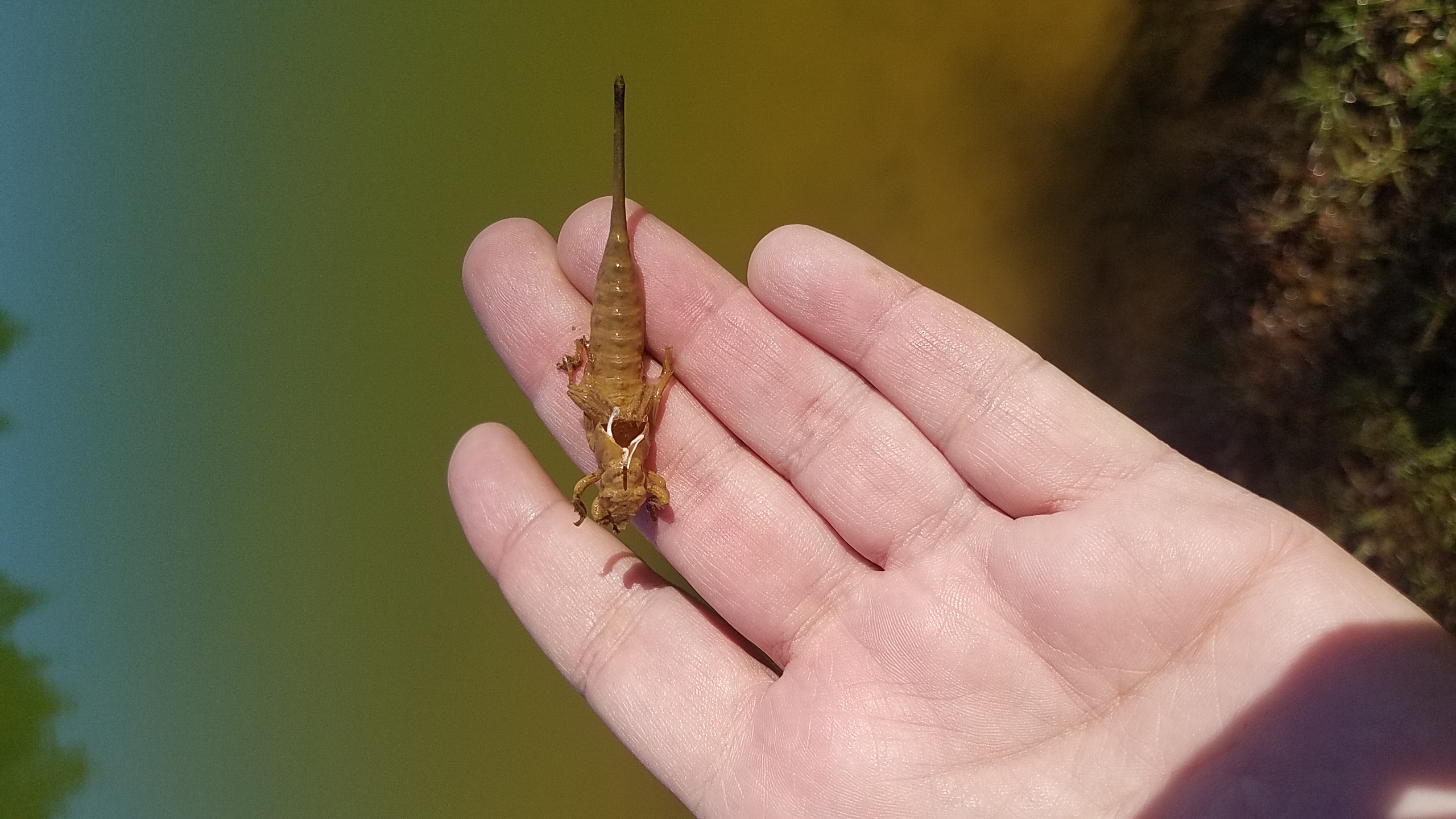During a pond visit to the dry northern part of Escambia County, something caught my eye floating along the margins of the pond.
There, on the shore, perched on a blade of grass, was an empty dragonfly exoskeleton and a newly emerged adult dragonfly (see image below). Dragonflies and damselflies belong to the Odonata order, one of the most widely recognized and popular orders of insects. For anyone who has ever watched a dragonfly, they are virtually unmatched in their flying ability. They have large eyes that take up nearly their entire head, and a very large body that helps support their agile wings. In the picture below, the adult dragonfly had recently emerged and was found drying its wings on nearby aquatic vegetation. Dragonflies have to develop a hard body before it can be an effective flyer and continue it’s life cycle. For more information about dragonflies, visit this University of Florida Publication on Dragonflies.

This newly emerged dragonfly is drying its wings getting ready for its first flight. Photo by Libbie Johnson
Immature dragonflies are called naiads (below), and are found primarily in aquatic environments where they grow until they are ready to emerge from the water as fully formed adult dragonflies like the one above. Naiads are heavy feeders, and one of their main food sources are mosquito larvae, but they can also feed on small fish and frogs. They molt several times before they take the form of what we know as a dragonfly.

A closeup of a Naiad dragonfly showing its formidable mandibles used for catching prey. Photo by Seth Bybee, University of Florida

